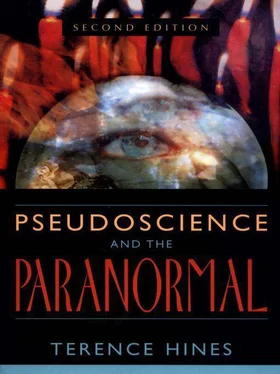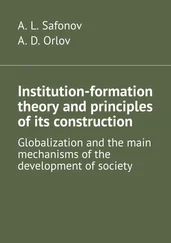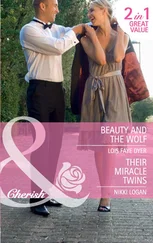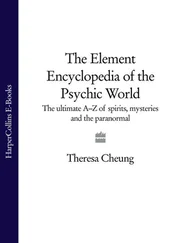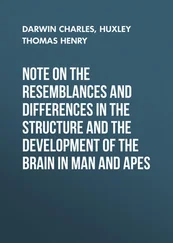A major source of the fame of Lourdes is not the certified miracle cures but the thousands of personal reports of people who went there and “got better.” The shrine is lined with the discarded canes and crutches of those who could walk without them after their visit. However, the trip to Lourdes and the ceremonies performed there serve to build great excitement and hope in the pilgrims. Bernstein (1982) describes the “electricity in the air as the huge crowd [of pilgrims] moves from the bank of the river to the grand upper basilica, singing in unison” (p. 146). This is just the type of exciting and physiologically stressful stimulus that causes release of pain-reducing endorphins, as described earlier. Those who come to Lourdes finding it difficult—but not impossible—to walk with crutches or a cane will thus experience a reduction in their level of pain, perhaps enough to allow them to walk unaided, at least for a while. When the pain returns, the period of relative freedom from pain will be accepted as a miracle. After all, the biochemistry of pain reduction via endorphin release is far from common knowledge. The pain’s return will be explained as due to failure to pray enough, or to some other mystical cause. The French writer Anatole France made a telling and pungent comment upon visiting Lourdes in the late nineteenth century and seeing all the abandoned crutches and canes: “What, what, no wooden legs???”
There is apparently a brisk market in the United States for water from Lourdes. It is imported by the Lourdes Center in Boston. The center’s newsletter is filled with testimonials to the wonderful curative powers of the water: “For the past six years I was handicapped with a sore toenail; each spring I was obliged to have it lanced by the doctors…. I applied Lourdes water constantly [and] I now have a normal white nail and no infection,” or “My mother was delivered from cancer pain” (quoted in Bernstein 1982, p. 141). One need only remember the urine drinkers’ testimonials to marvel at the miraculous power of belief to make people see miracles where there are none.
Chapter 11
“ALTERNATIVE” MEDICINE
Health and nutrition quackery, relabeled in the past ten years or so as “alternative” medicine, is a serious problem for modern consumers of medical services. As early as 1984, a congressional committee reported that the “promotion and sale of useless remedies promising relief from chronic and critical health conditions” cost the American public at least $10 billion a year (Pepper 1984, p. v). Since this report, health quackery, in numerous forms, has become much more respectable and widespread. Such acceptance is indicated by numerous best-selling books on the topic, health plan reimbursement for “alternative” medicine procedures, and even the introduction of courses and programs in “alternative” medicine at some United States medical schools (Schneiderman 2000). Before discussing specific areas of “alternative” medicine and their associated claims, it will be useful to first discuss some general traits of “alternative” medicine that mark it out as pseudoscientific and distinguish it from scientific medicine. First is the acceptance on the part of “alternative” medicine practitioners of patient testimonials as proof of therapeutic effectiveness. Related to this is the tendency of “alternative” medicine practitioners to ignore the importance of—or actually denigrate the usefulness of—nonbiased, empirical studies of whether therapies actually work. Finally, “alternative” medicine writing is often filled with scientific-sounding jargon that, on examination, turns out to be without much meaning.
DISTINCTIONS BETWEEN “ALTERNATIVE” AND SCIENTIFIC MEDICINE
Probably the most dramatic difference between “alternative” and scientific medicine is that “alternative” medicine relies in large part on testimonials and subjective reports and “feelings” of patients and therapists to validate therapeutic effectiveness. In other words, if a patient simply reports that therapy X has really made them better, this is accepted as proof that therapy X really has made the patient better. As noted in chapter 10, testimonials are an extraordinarily unreliable source of evidence for the reality of a cure. Just remember all the urine drinkers happily and, in their own minds, honestly stating that drinking their own urine cured them of this, that, or the other disease. In addition, “alternative” medicine proponents often actively deride the importance of carefully controlled scientific studies of whether a therapy actually works. Mehl-Madrona (1997) objects to rationally in general, saying “rational explanations are destroying medicine today.”
One of the most famous proponents of “alternative” medicine is Dr. Andrew Weil, author of several books on the topic (Weil 1995a, 1995b, 1997, 1998) that, among other things, exemplify the importance that unsupported testimonials and anecdotes have in alternative medicine. As Relman (1998, 2000) points out in a through critique of Weil’s views, Weil accepts as evidence reports of cures where not only is there no documentation that the patient was cured, there’s no documentation that the patients was even sick in the first place! In one case, reported in Weil (1997), an individual wrote Weil and said he had been diagnosed with “bone cancer.” He went on to say that he cured himself by riding a bicycle and eating healthy foods. Nowhere did he provide Weil with the slightest evidence for his illness—and yet Weil reports this “case” as proof that a good diet can cure cancer!
The approach of scientific medicine to the issue of how to determine whether a therapy works or not is totally different. Scientists in all fields of investigation have long known that the world is much too complex to be understood on the basis of subjective impressions, beliefs, and feelings. Rather, careful and sometimes tedious procedures have to be followed to tease apart the welter of interrelationships that lead to cause-and-effect understanding. This is especially true when dealing with issues of therapeutic effectiveness, where the subjective result of the therapy may be very different than the actual result.
There are several factors that work to convince both patient and therapist alike that an ineffective therapy has actually worked. The best known of these is the placebo effect , which was mentioned earlier in the context of psychotherapy and faith healing. But placebo effects also occur in medical therapies—including drug therapies and even surgical therapies. Recall, as noted in chapter 10, that placebo effects for pain reduction can even be induced in animals through classical conditioning procedures (Watkins and Mayer 1986). A therapy can be considered to be truly effective only if it produces greater improvement than the placebo effect. In order to determine this, is it vital to carry out what is known as a double-blind, placebo-controlled study . In such a study, at its simplest, one group of patients gets a placebo and the other group gets the actual treatment or therapy being tested. The patients in the two groups do not know whether they are receiving the actual treatment or the placebo, nor do the individuals administering the treatment or the individuals evaluating the patients during and following treatment. If done properly, such a study will eliminate effects of bias (often unconscious) on the part of patients, therapists, and evaluators and reveal a truer picture of the effectiveness of the treatment.
Placebo effects can be due to a number of factors (see Shapiro and Shapiro 1997, for a review) having to do with the patient, therapist, or evaluator. This is fairly easy to see, even for purely medical treatments. As a hypothetical example, consider a new drug treatment for Parkinson’s disease, a degenerative brain disease seen mostly in the elderly, the major symptoms of which are difficulty in movement and a tremor. Further assume that the new drug has no real effect whatsoever on the disease, but that the promoter of the new drug is a charismatic individual who truly believes in its effectiveness. Believing strongly, he sees no reason to waste time with a placebo-controlled study. Rather, he simply gives the drug to a group of Parkinsonian patients for, say, six months, and sees if they have improved at the end of that period. He will almost certainly find improvement. Why? His patients will have been told, repeatedly, that they are getting a new and effective treatment. They will be excited. They will be more motivated to try hard on the various tests administered to them. Their evaluators, perhaps the therapist himself, will likewise be motivated to see improvement. Further, Parkinson’s disease, like any disease, fluctuates over time. Patients are a little better one day, worse the next, better a week later, and so on. The therapist and the patient, believing in the (yet unproven) effectiveness of the new drug, will interpret random improvements as a result of the drug, while ignoring deteriorations. This is exactly the same kind of selective memory that is responsible for belief in prophetic dreams and hunches noted in chapter 2. Unfortunately, the history of medicine is littered with stories of worthless therapies, some very harmful, that were sincerely believed by practitioners to be effective until double-blind, placebo-controlled studies proved otherwise.
Читать дальше
